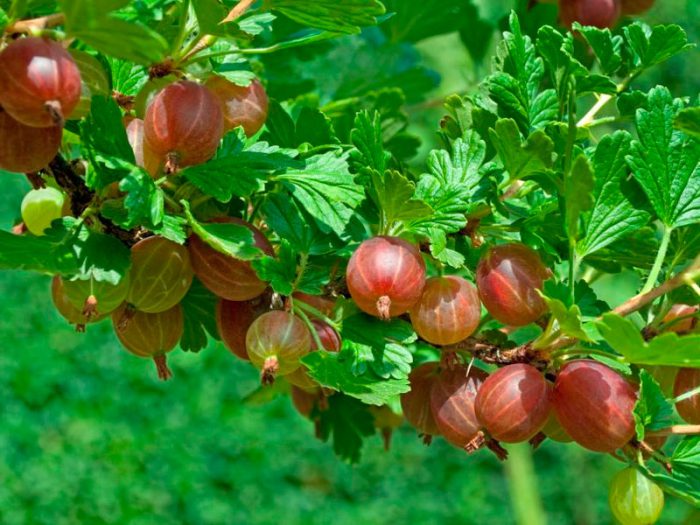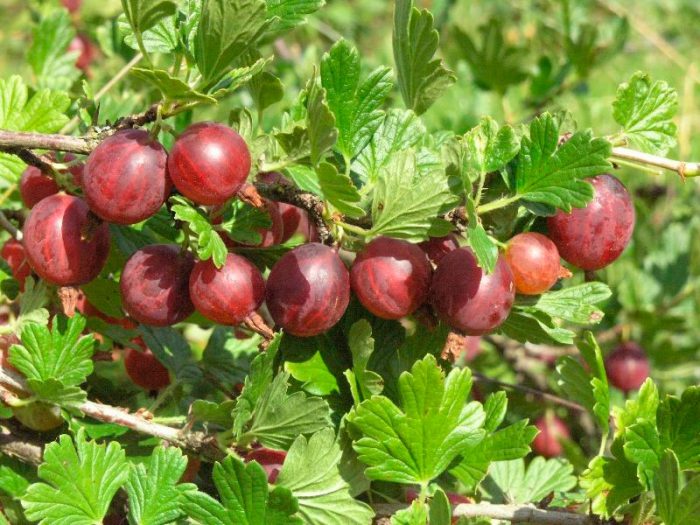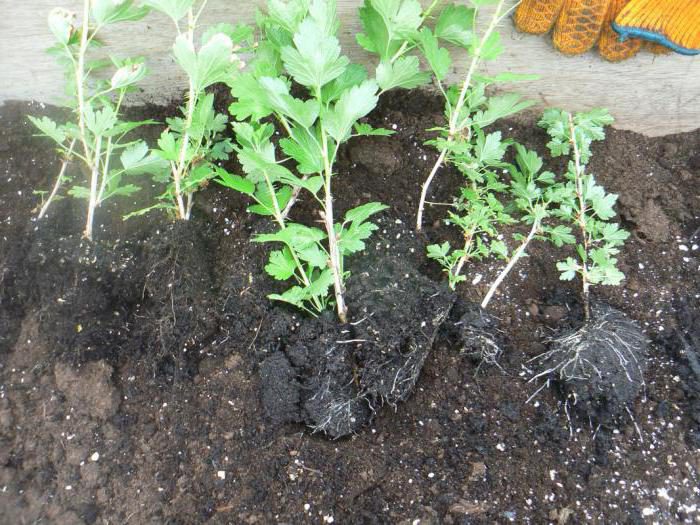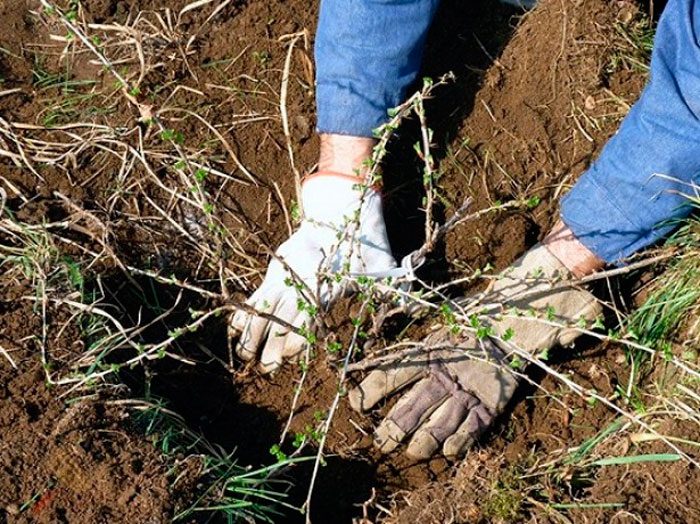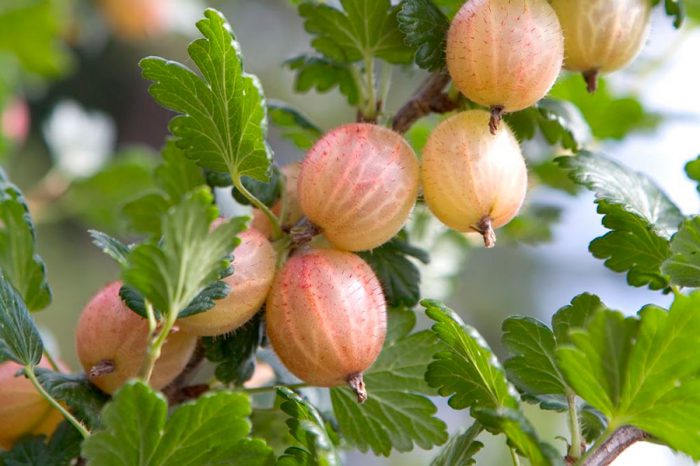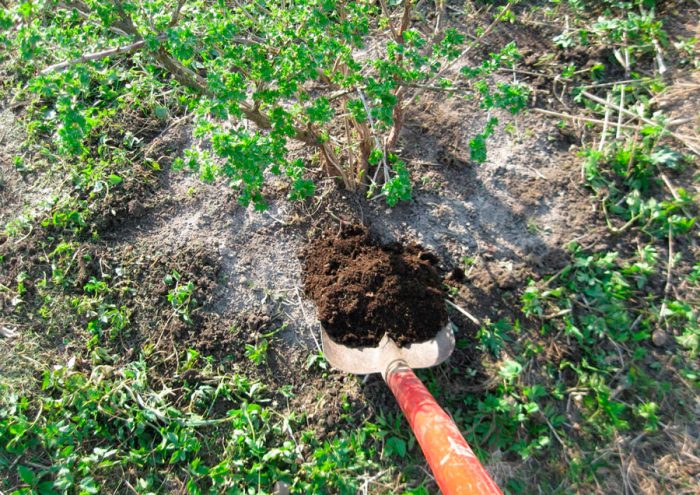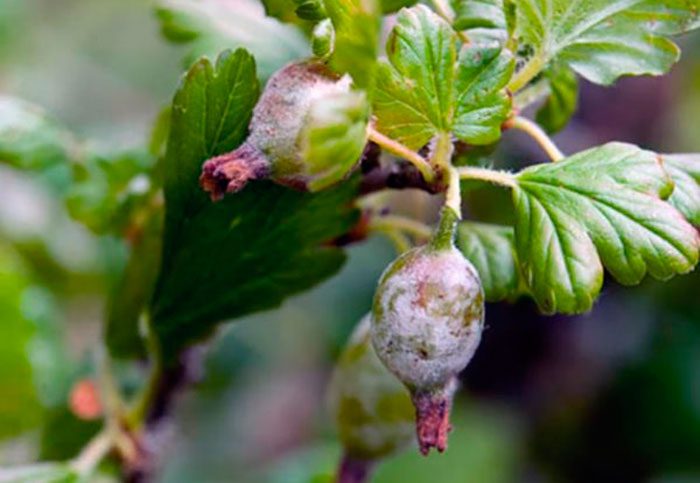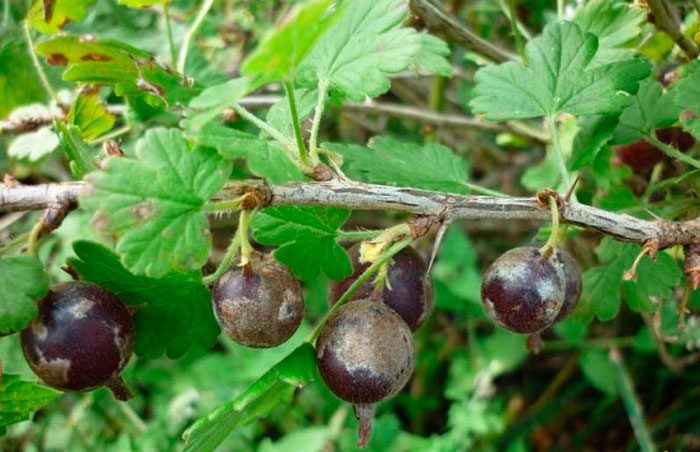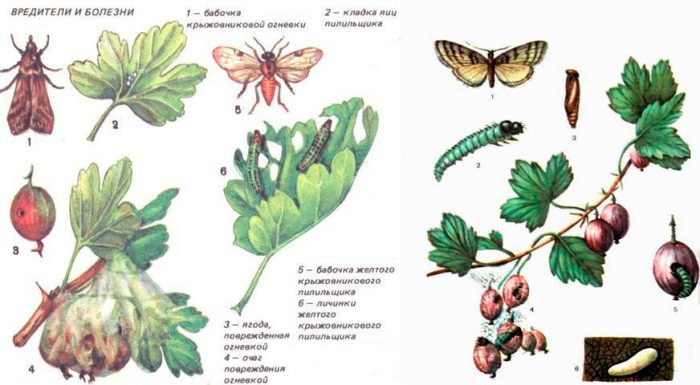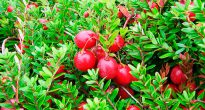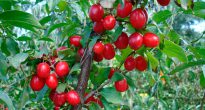Common gooseberry (Ribes uva-crispa), either European or rejected - this species is a representative of the genus currant of the gooseberry family. The birthplace of such a plant is Western Europe and North Africa. Under natural conditions, it is still found in South and Central Europe, Central Asia, the Caucasus and North America. J. Ruel was the first to describe the gooseberry in 1536 in the book "De natura stirpium". The existence of gooseberries in European countries became known only in the 16th century, while in the 17th century in England its popularity increased sharply, as a result, intensive work of breeders began to develop new varieties of such a crop. At first, only a few varieties of gooseberries were obtained, but by the 19th century there were already several hundred of them. Also, specialists from America worked on gooseberries, they received a hybrid of this plant, which is resistant to powdery mildew, which is considered the main enemy of this culture. Today, gooseberries are cultivated in almost every country. In Russia, such a plant is called "northern grapes".
Content
Gooseberry features
Gooseberries are not very large shrubs, the height of which does not exceed 1.2 m. The peeling bark is colored brownish gray. The plant has leaf spines. On the surface of young shoots of a cylindrical shape, there are thin needles - these are thorns. The petiolate dull leaf plates are short pubescent, they have a cordate-ovoid or rounded shape and a length of about 60 mm. The leaves are three-five-lobed, with obtuse teeth along the edge. Axillary pale red or light green flowers open in May. The fruits are spherical or oval berries, reaching 1.2 cm in length (in some varieties, the berry length is about 4 cm), their surface can be bare or there are rough bristles on it, there is a well-distinguishable venation. They can be colored white, green, yellow or red and ripen from June to August. The fruits of such a shrub are very tasty and healthy, they contain metal salts, vitamins, organic acids and tannins.This plant is an early honey plant, it helps to attract a large number of pollinating insects to the garden plot. The gooseberry is self-fertile, so if you wish, you can plant only 1 bush in the garden, and it will yield a crop.
Planting gooseberries in open ground
What time to plant
You can plant gooseberries in open ground in spring or autumn (from the last days of September to the second half of October). Experienced gardeners recommend planting such a crop in the autumn, since before frost the seedlings take root well, and they have a fairly powerful root system.
Before proceeding with the direct planting of gooseberries, you need to find the most suitable site for this, which would comply with all the rules of agricultural technology of this culture. It should be noted that the root system of such a shrub is long, and therefore the lowlands for planting it are not suitable, since the likelihood of developing a fungal disease is high in such an area. A well-lit place, located on a flat area or on a hillock, is suitable for landing, which should have reliable protection from cold winds blowing from the east and from the north. The soil should be slightly acidic or neutral, while its pH is about 6. Sandy, loamy, sandy loam and clayey soil is well suited for growing such a crop, while in the latter case, the surface of the site will have to be loosened very often.
Planting gooseberries in autumn
Weeding of this shrub is complicated by the fact that it has sharp thorns, in this regard, in the first autumn weeks, it will be necessary to remove all root-sprouting weeds (for example, wheatgrass) from the area allocated for planting gooseberries. Immediately before planting, the soil should be dug up, while trying to remove all the rhizomes of the weeds. After that, the surface of the site is leveled with a rake, while all large lumps must be broken. The preparation of the planting pit should be done 15–20 days before planting, which will allow the soil to settle well. The length, depth and width of the fossa should be half a meter. While digging a hole, the upper nutrient layer of the soil must be thrown to one side, and the lower infertile - to the other. The top layer of soil must be mixed with 50 grams of potassium sulfate, with 10 kilograms of humus or rotted manure and 50 grams of superphosphate. If you apply fertilizer during planting, then you will not need to feed the gooseberries for several years. In the event that the soil is clayey, then 1 bucket of river sand should be poured into the landing hole. During planting, a distance of 1–1.5 m should be observed between seedlings, while the row spacing should be about 3 m.
Suitable for planting are one-two-year-old seedlings with a developed root system (the length of the roots should be about 0.25–0.3 m), as well as several powerful shoots. Before planting the gooseberry, it must be immersed in a solution of organic fertilizers for 24 hours (3-4 large tablespoons of sodium humate for half a bucket of water). The seedlings should be placed in the pit at a slight slope or straight ahead, while after planting, its root collar should be buried several centimeters into the soil. The root system of the plant must be carefully spread out. The pit must be filled up gradually, while constantly compacting the soil. The seedling should be watered with 10 liters of water. After the liquid is absorbed into the soil, its surface will need to be covered with a layer of mulch (humus or peat), while its thickness should be 20–30 mm. If you mulch the site, then this will significantly reduce the number of watering, weeding and loosening. The planted plant will need to cut off all the shoots, the length of the remaining segments should be about 50 mm, while each of them should have 5 or 6 buds.


Watch this video on YouTube
Planting gooseberries in spring
Planting a gooseberry seedling in open soil in spring should be exactly the same as in autumn. However, experts still recommend giving preference to autumn planting, since plants planted in spring take root less well and have slower stem growth. After planting, the shrub will give a full harvest only in the third or fourth year. Provide him with the right care, and he will delight you with rich yields of delicious berries for 10-15 years.
Gooseberry care
It is quite simple to plant and grow gooseberries, especially if the gardener adheres to all the rules of agricultural technology of this culture. In early spring, when the snow has not yet melted, the bushes need to be sprayed with boiling water using a spray bottle. This treatment is carried out in order to prevent a variety of diseases and pests.
It is necessary to loosen the soil surface around the plants to a depth of 8 to 10 cm in May. To reduce the amount of loosening in the future, the area should be covered with a layer of mulch. If there is such a need, then the shrub at the same time should be fed with a solution of nitrogen and potassium fertilizers or manure infusion.
Gooseberry reacts extremely negatively to insufficient moisture in the soil, especially during flowering (spring) and during the ripening of berries (summer). Experts recommend using drip or subsurface irrigation, in which case the water will flow directly to the root system of the bush (to a depth of 5–40 cm). For the entire growing season, the shrub will need to be watered 3-5 times in this way. Sprinkler irrigation is not suitable for gooseberries, especially with cold water. In the event that in spring time the soil around the bushes was covered with mulch, then the number of weeding and loosening will sharply decrease. However, if it is still necessary to remove weeds or loosen the soil, then such procedures must be carried out, despite the sharp thorns of the plant.
In the bushes planted in rows, the hanging branches must be lifted with stretch marks or nets, which should be pulled between the rows at a height of 0.25–0.3 m on both sides of the row.


Watch this video on YouTube
Gooseberry care in autumn
In the fall, the gooseberry will need to be prepared for wintering. In order for the shrub to lay the fruit buds of the next year, it is necessary that it does not need nutrients, therefore it must be fed. Also, in the autumn, pruning is done, because it is not recommended to carry out it in the spring.
Fertilizer
Such a shrub gives rich yields for many years, and at the same time it needs nutrients, which it takes from the soil. In this regard, it is recommended to feed gooseberries every year, using both organic and mineral fertilizers. In spring, under 1 bush, you need to add 50 grams of superphosphate, 25 grams of potassium sulfate, ½ a bucket of compost and 25 grams of ammonium sulfate. If the shrub is very large and yields high yields, the indicated amount of fertilizer should be doubled. Fertilizers are applied to the soil along the perimeter of the crown, since it is in this diameter that the root system of the bush is located. To embed fertilizers in the soil, it must be loosened. As soon as the plant fades, it must be fed with a mullein solution (1: 5), while for 1 bush from 5 to 10 liters of nutrient solution is taken. Re-feeding with mullein is carried out in 15–20 days.
Gooseberry pruning
Pruning gooseberries in spring
In early spring, before the buds swell, the gooseberries must be cut off. To do this, it is necessary to cut out all the weak, diseased, unproductive, dried, injured and frost-affected stems. It is also necessary to cut out all basal shoots, and the weakened ends of the branches need to be trimmed slightly to healthy tissue. Remember that spring pruning can only be done before sap flow begins.The fact is that gooseberry sap flow begins very early, and you can be late with pruning. If you cut the plant during sap flow, this will lead to its weakening. In this regard, experienced gardeners advise pruning this crop only in the autumn.
Pruning gooseberries in autumn
Such a shrub needs regular pruning, which should be done every year. Otherwise, already in the third year of the gooseberry's life, its thickening is observed, which negatively affects the quality of the berries growing in the thick. And even if you thin out the shrub in time, then it will be easier to spray it from pests or diseases. The most valuable are five to seven year old branches. In this case, the branches of the first three orders, other branches and branches are considered to be low productive. That is why those branches that are more than 8-10 years old should be cut to the base, their color is almost black. As a result, zero shoots will grow in the bush, and after a while they will be able to replace the aging ones. If small fruits of poor quality begin to grow on the upper parts of the shoots, then they must be pruned. You should also cut out long-growing stems, as well as those that are located too low. Places of cuts, especially on thick stems (diameter more than 0.8 cm), must be treated with garden pitch, otherwise plant sap will begin to flow out of them.


Watch this video on YouTube
Gooseberry diseases and their treatment
Powdery mildew on gooseberries
Powdery mildew (spheroteka) is the greatest danger to gooseberries. This disease can leave the gardener without a crop, while if the shrub is not treated, then in a few years it will die. The most intensive development of the spherotek is observed in damp warm weather. In the affected shrub in the last weeks of spring or the first - summer, a loose bloom of white appears on the surface of the stems, leaf plates and berries. After some time, this plaque becomes a brown crust. In the affected stems, curvature and drying are observed, twisting and cessation of growth of infected leaf plates occur, they become brittle. The affected fruits are not able to ripen, cracks appear on their surface, and they fall off. To cure the affected plant, before it blooms, it is necessary to spray it with a solution of the HOM preparation containing copper (for 1 bucket of water, 40 grams of the substance). You can also treat the bush before it blooms and at the end of flowering with Topaz (follow the instructions on the package). Most often, this disease affects the following varieties: Golden Light, Russian, Date, Prune and Triumphal. There are also varieties that are highly resistant to this foreign disease (her homeland is the territory of America): Senator, Houghton, Grushenka, African, Finets, etc. Moreover, most of these varieties resistant to the spherotek were the result of the work of breeders from America.
Other diseases
In some cases, such a shrub can be affected by anthracnose, mosaic, white spot or goblet rust. If the bush is affected by the mosaic, then it must be dug up and destroyed as soon as possible, the fact is that this viral disease is incurable. For the treatment of shrubs affected by spotting, anthracnose and rust, copper sulfate, Nitrafen or Bordeaux mixture are used. In this case, the plant is treated in 2 doses: the first spraying is carried out in early spring before the buds open, and the second - 1.5 weeks after the end of the harvest. For prevention purposes, at the beginning of the spring period, the area where the gooseberry grows must be freed from fallen leaves, because they can contain pathogens, and weeds must also be removed in a timely manner.
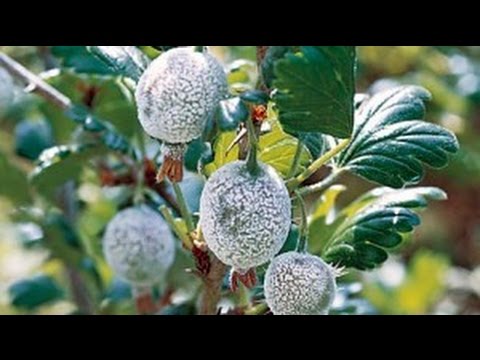

Watch this video on YouTube
Gooseberry pests and control
In some cases, pests can settle on the shrub, while the most often harmful to the plant is gooseberry moth and shoot aphid. Before the gooseberry blooms, a moth butterfly appears from the soil. She arranges clutches of eggs in the flowers of the plant. When the flowering comes to an end, caterpillars of a rich green color will appear from the eggs, they gnaw the berries and eat the seeds. If aphids settle on the bush, then the leaf plates will begin to curl, the stems become thinner and become crooked, their growth will stop, crushing and falling of unripe fruits is also observed. To get rid of these pests, the bush must be sprayed with Fufanon or Aktellik. However, as you know, it is easier to prevent the defeat of the shrub by pests than to get rid of them later. Therefore, the following preventive measures should be taken regularly:
- After all the snow has melted, the surface of the soil under the plants must be covered with a very dense material (for example, roofing material), while its edges are covered with soil. As a result, fire butterflies will not be able to get out of the ground. When the bush fades, this shelter must be removed.
- In autumn, the shrub must be spud to a ten centimeter height.
- It is necessary to carry out a systematic collection and destruction of the fruits, inside which are the caterpillars.
- Faded bushes should be treated with Lepidocide or Bicol.


Watch this video on YouTube
Gooseberry varieties with photos and descriptions
All gooseberry varieties are divided into American-European (hybrid) and European. In comparison with hybrid varieties, European varieties have a longer production life and larger berries. But at the same time, European varieties are more susceptible to damage by various diseases and pests. Also, all varieties are conventionally divided according to the size, color and shape of the fruit, according to the ripening time, according to the yield, as well as the presence of thorns or their absence. The best varieties:
- African... This winter-hardy variety does not have a very large number of thorns. Medium-sized berries have a dark purple color, there is a waxy coating on the surface. The pulp is sweet and sour with a currant flavor. These fruits are well suited for making jelly.
- Black Negus... The fruits are black, covered with a glossy skin. This frost-resistant mid-season variety, which is strongly thorny, was created by Michurin, but to this day it is very popular with gardeners in the middle latitudes. Small fruits do not crack and have a sweet-sour taste. Jam, wine, preserves and compotes are made from them.
- Lights of Krasnodar... This studless variety is suitable for growing in all climatic conditions. The fruits are large red.
- Russian yellow... This variety is resistant to fungal diseases, it has a small number of thorns, which are mainly found in the lower part of the stems. Fruits are large, yellow, oval, remain on the bush for a long time.
- White triumph... This variety is distinguished by its fast growth and productivity. When ripe, greenish fruits acquire a slight yellowish tint. They are sweetish, remain on the bush for a long time.
- Date fruit... This variety is susceptible to disease with spheroteka (powdery mildew). However, it is still one of the most popular varieties, because it is high-yielding, and its fragrant fruits are distinguished by their high taste. The green fruits have a purple-crimson blush.
There are also varieties:
- with sweet fruits - Eaglet, Hinnomaki Gelb, Northern Captain, Spring, African, Kolobok;
- with sweet and sour fruits - Malachite, Plum, Russian, Donetsk large-fruited;
- with fragrant fruits - White Triumph, Protector, Flamingo, Hinnomaki Stryn, African;
- without thorns - Eaglet, Gentle, Serenade, Pax;
- with a large number of thorns - Defender, Yubileiny, Malachite, Donetsk large-fruited;
- with rare thorns - Chernomor, Kolobok, Captivator;
- with thorns growing on the lower part of the stems - Date, Russian, Smena;
- late-ripening and middle-late - Malachite, Sadko, Smena, Serenada, Chernomor;
- early maturing - Eaglet, Yarovoy, Salut, Spring;
- mid-early - Flamingo, Plum, Affectionate;
- mid-season - Kolobok, Pax, Krasnoslavyansky, Prunes.
Also, a hybrid of yoshta, created by crossing black currants and gooseberries, is gaining more and more popularity among the gardener.
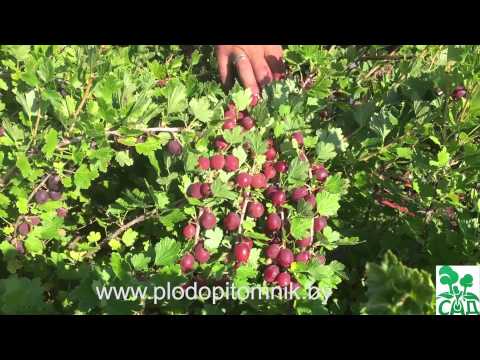

Watch this video on YouTube

